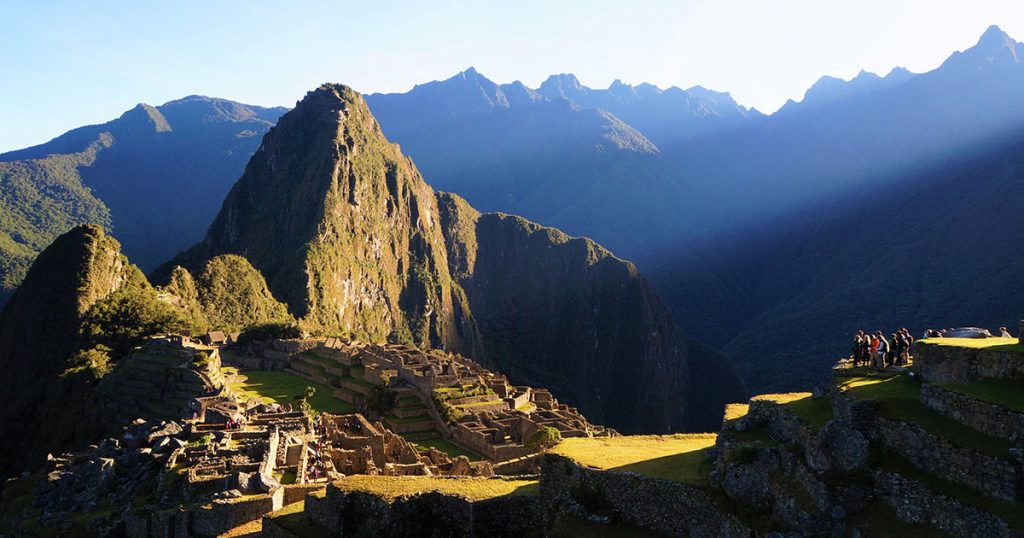
WEATHER MACHU PICCHU
When planning a visit to the ancient Incan city of Machu Picchu, it is important to consider the weather conditions. The geography and climate of this iconic site play a significant role in determining the type of weather you can expect during your visit. From cloudy days to heavy rainfall and bright sunshine, understanding the weather patterns of Machu Picchu is essential for a memorable and comfortable experience.
Geography and Climate of Machu Picchu
Machu Picchu is located in the Andes Mountains of Peru, at an elevation of approximately 7,970 feet (2,430 meters) above sea level. The site is surrounded by towering peaks and lush vegetation, creating a unique microclimate. The climate is classified as subtropical highland, characterized by mild temperatures, high humidity, and distinct rainy and dry seasons.Weather Patterns and Seasons
The weather at Machu Picchu is influenced by its proximity to the equator and the presence of the Andes Mountains. The region experiences two distinct seasons: the dry season (May to September) and the rainy season (October to April). During the dry season, you can expect clear skies, cooler temperatures, and less rainfall. On the other hand, the rainy season brings frequent showers and cloudy days.The Influence of Elevation
The elevation of Machu Picchu greatly impacts the weather conditions. As you ascend to higher altitudes, the temperature drops, and the air becomes thinner. It is important to note that the weather can change dramatically as you explore different areas of Machu Picchu, especially if you venture to the higher peaks. Be prepared for temperature variations and potential weather changes during your visit.Effects of Clouds on Machu Picchu
Clouds are a common feature at Machu Picchu, particularly during the rainy season. They can significantly affect visibility, covering the majestic ruins in a blanket of mist. However, the clouds also add a mystical and ethereal charm to the site, creating a unique atmosphere for visitors. Be sure to check the weather forecast and plan your visit accordingly if you wish to enjoy unobstructed views of Machu Picchu.Precipitation and Rainfall at Machu Picchu
Machu Picchu receives a substantial amount of rainfall throughout the year. The average annual rainfall is around 79 inches (2,000 millimeters). However, the majority of the rainfall occurs during the rainy season, with the months of January to March experiencing the highest precipitation levels. It is advisable to pack appropriate rain gear and be prepared for wet conditions during this time of the year.Sunshine and Temperature Variation
Despite the cloudy and rainy reputation, Machu Picchu does experience periods of sunshine, especially during the dry season. On clear days, the sun can be intense due to the high altitude. It is important to protect yourself from the sun’s rays by wearing sunscreen, a hat, sunglasses, and lightweight, breathable clothing. Temperature variation is also notable, with cooler temperatures in the mornings and evenings, and warmer temperatures during midday.Best Time to Visit Machu Picchu
The best time to visit Machu Picchu largely depends on your preferences and tolerance for different weather conditions. The dry season, from May to September, is considered the peak tourist season, with more crowds but generally clearer skies. The rainy season, from October to April, offers lush green landscapes and fewer tourists but also more rainfall. Consider your priorities and plan accordingly to make the most of your visit.Preparing for Weather Conditions
When preparing for your visit to Machu Picchu, it is crucial to pack appropriately for the weather conditions. Bring waterproof clothing, sturdy footwear, and layers to adapt to temperature variations. Don’t forget sunscreen, a hat, and sunglasses to protect yourself from the sun. It is also advisable to carry a small umbrella or rain poncho to stay dry during unexpected showers.Conclusion
Understanding the weather patterns and conditions at Machu Picchu is essential for a successful and enjoyable visit. From rainfall to clouds and temperature variations, being prepared for different weather scenarios will ensure that you have a memorable and comfortable experience at this ancient wonder of the world.Frequently Asked Questions
1. What is the average annual rainfall at Machu Picchu?
The average annual rainfall at Machu Picchu is approximately 79 inches (2,000 millimeters). The majority of the rainfall occurs during the rainy season, which lasts from October to April.2. Do clouds affect visibility at Machu Picchu?
Yes, clouds can significantly affect visibility at Machu Picchu, particularly during the rainy season. The site may be covered in mist and fog, reducing the visibility of the ruins. However, the clouds also add a mystical atmosphere to the site, creating a unique experience for visitors.3. Are there any months with less rainfall?
During the dry season, from May to September, rainfall is generally lower compared to the rainy season. However, it is important to note that even during the dry season, Machu Picchu can still experience showers and occasional rainfall.4. How can I dress appropriately for Machu Picchu’s weather?
When visiting Machu Picchu, it is advisable to dress in layers to accommodate temperature variations throughout the day. Wear comfortable and breathable clothing, and don’t forget to bring waterproof outerwear for potential rain showers. Protect yourself from the sun by wearing sunscreen, a hat, and sunglasses, especially during the dry season when the sun can be intense.
Top Tours in Peru 2023
- Tour in Peru 5 days visit: Cusco, Machu Picchu, Sacred Valley and Rainbow Mountain
- Tour in Peru 5 days visit: Cusco, Machu Picchu, Sacred Valley and Humantay Lagoon
- Tour in Peru 9 days: Lima, Paracas, Nazca, Cusco, Valley, Machu Picchu, Lake Titicaca
- Tour in Peru 10 days visit: Lima, Cusco, Sacred Valley Machupicchu, Piura, Máncora
- Tour in Peru 15 days: Lima, Cusco, Valley, Machu Picchu, Lake Titicaca – Puno, Colca Canyon – Arequipa, Lima, Amazon River – Iquitos
- Tour in Peru 15 days: Lima, Paracas – Nazca, Colca Canyon – Arequipa, Lake Titicaca – Puno, Cusco – Sacred Valley, Machu Picchu, Lima
Tour from 1 to 30 days in Peru includes hotel, transportation, income and more
- Tour in Peru 1 day Machu Picchu in one day with the Train Company “Inca Rail”
- Tour in Peru 1 day Machu Picchu in one day with the Train Company “Peru Rail”
- Tour in Peru 2 days Machu Picchu and Sacred Valley
- Tour in Peru 2 days Machupicchu and Huaynapicchu
- Tour in Peru 3 days and 2 nights visit: Cusco, Machu Picchu
- Tour in Peru 4 days Cusco, Machu Picchu, Valley
- Tour in Peru 4 days with 1 night in Machu Picchu
- Tour in Peru 5 days visit: Cusco, Machu Picchu, Sacred Valley, Maras Moray
- Tour in Peru 5 days visit: Cusco, Machu Picchu, Sacred Valley and Rainbow Mountain
- Tour in Peru 5 days visit: Cusco, Machu Picchu, Sacred Valley and Humantay Lagoon
- Tour in Peru 5 days visit: Lima, Cusco, Machu Picchu, Sacred Valley
- Tour in Peru 6 days visit: Lima, Cusco, Machu Picchu, Sacred Valley, Lake Titicaca
- Tour in Peru 7 days: Lima, Arequipa, Colca Canyon, Cusco, Sacred Valley, Machu Picchu
- Tour in Peru 7 days: Lima, Cusco, Sacred Valley, Machu Picchu, Nazca, Paracas, Ballestas
- Tour in Peru 7 days: Lima, Valley, Machu Picchu, Puno, Lake Titicaca, Uros
- Tour in Peru 8 days visit: Lima, Paracas, Nazca, Cusco, Valley, Machu Picchu, Lake Titicaca
- Tour in Peru 9 days: Lima, Paracas, Nazca, Cusco, Valley, Machu Picchu, Lake Titicaca
- Tour in Peru 10 days visit: Lima, Cusco, Sacred Valley Machupicchu, Piura, Máncora
- Tour in Peru 11 days visit: Lima, Machu Picchu, Lake Titicaca, Puno, Colca Canyon, Arequipa
- Tour in Peru 11 days visit: Lima, Nazca, Machupicchu, Cusco, Puno, Lake Titicaca
- Tour in Peru 15 days: Lima, Cusco, Valley, Machu Picchu, Lake Titicaca – Puno, Colca Canyon – Arequipa, Lima, Amazon River – Iquitos
- Tour in Peru 15 days: Lima, Paracas – Nazca, Colca Canyon – Arequipa, Lake Titicaca – Puno, Cusco – Sacred Valley, Machupicchu, Lima
- Tour in Peru 20 days: Lima, Cruise on the Amazon River – Iquitos, Lima, Huacachina, Nazca Lines, Ballestas – Ica, Colca Canyon – Arequipa, Cusco, Sacred, Machu Picchu
- Tour in Peru 22 days: Lima, Señor de Sipán – Chiclayo, Chan Chan – Trujillo, Lima, Paracas, Nazca, Colca Canyon – Arequipa, Lake Titicaca Puno, Cusco, Valley, Machu Picchu
- Tour in Peru 25 days: Lima, Nazca, Machupicchu, Trujillo, Chiclayo, Lord of Sipan, Chavín De Huántar, Arequipa, Cusco
- Tour in Peru 30 days: Lima, Chan Chan Trujillo, Sipan Chiclayo, Kuelap Chachapoyas, Baños del Inca Cajamarca – Paracas, Nazca, Colca Arequipa, Titicaca, Cusco, Valle, Machu Picchu
Inca Trail to Machu Picchu
- Inca Trail 2 days to Machu Picchu
- Inca Trail 4 days to Machu Picchu
- Inca Trail 4 days to Machu Picchu”Lujo”
- Inca Trail to Choquequirao 4 days
- Inca Trail to Choquequirao 5 days
- Inca Trail through the Nevado Salkantay 4 days to Machu Picchu with Sky Camp
- Inca Trail through the Nevado Salkantay 5 days to Machu Picchu with Sky Camp
testimony of our passengers
Book your tour or ask your questions
| E-mail: info@machupicchu.com.pe | MOVIL: +51-977777777 |
| E-mail: mapitravel@hotmail.com | MOVIL: +51-984630919 |
| E-mail: machupichutravel@gmail.com | MOVIL: +51-984654111 |









